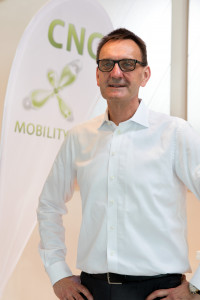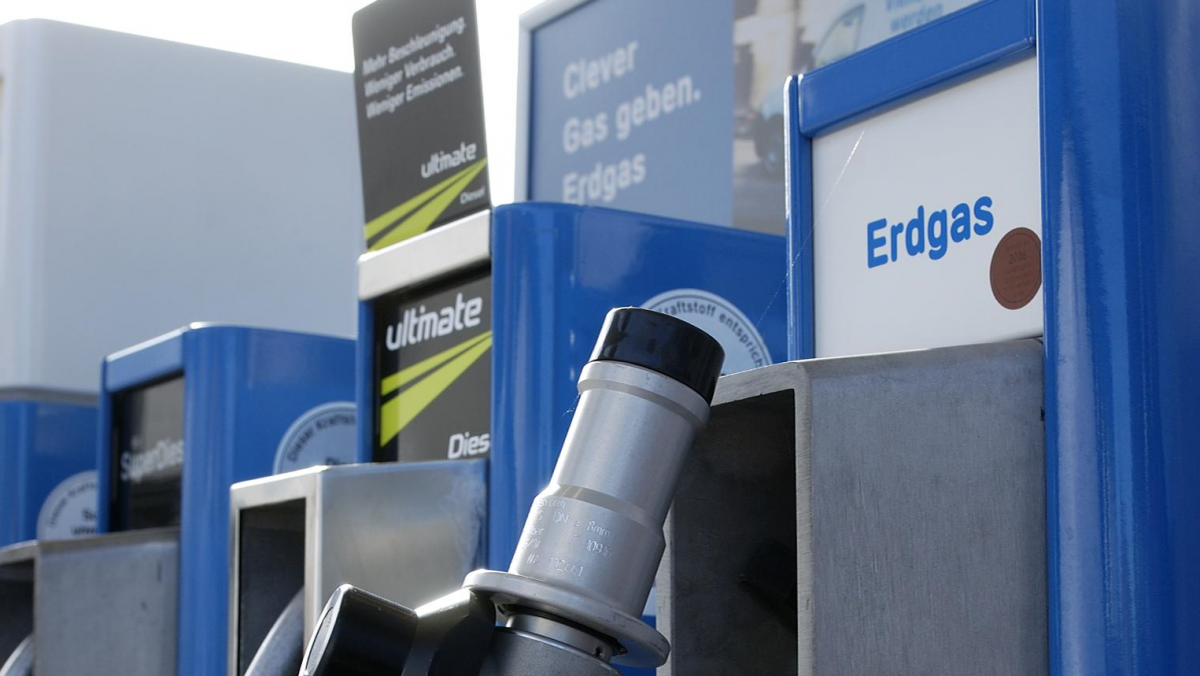Natural gas could power up to 10 percent of all cars – Volkswagen
Clean Energy Wire: Over the past two years, German carmakers, among them Volkswagen, have presented extensive strategies with a clear focus on e-mobility, underlined by technological and policy developments all over the globe. Is gas mobility in the passenger car sector dead?
 Stephen Neumann: No. There are areas of use and regions where electric vehicles are not a real alternative to combustion engine cars, for example when it comes to range and charging times. We target this gap with gas mobility. Because of our modular strategy, we can expand our model range with comparably little effort and costs, as the engines fit in many of our existing vehicles. Our engine factories welcome the fact that we’re stimulating the CNG [compressed natural gas] market, because they’re able to partially compensate for production losses resulting from the diesel discussion.
Stephen Neumann: No. There are areas of use and regions where electric vehicles are not a real alternative to combustion engine cars, for example when it comes to range and charging times. We target this gap with gas mobility. Because of our modular strategy, we can expand our model range with comparably little effort and costs, as the engines fit in many of our existing vehicles. Our engine factories welcome the fact that we’re stimulating the CNG [compressed natural gas] market, because they’re able to partially compensate for production losses resulting from the diesel discussion.
However, the CNG market in Germany is small.
It is definitely a niche market. We have seen three-digit growth rates in new registrations for several months now, when compared to the previous year, but the absolute numbers are still low. Last month (May 2018), we had about 1,500 new registrations. You can’t compare this to our petrol or diesel car sales.
How does gas mobility compare to the other, much larger, areas within the Volkswagen Group: petrol, diesel, and electric cars?
Our strategic focus must, of course, be on electric traction, and our resources are distributed accordingly. Still, you can see that we are able to realise this CNG mobility push, and this only works with support from within the company. Volkswagen’s position in the market allows us to aim for breakthroughs even in a niche. There might be a greater need for information to foster awareness inside and outside the company compared to e-mobility. An electric car might be more fascinating to the public, with all the new technology coming along. CNG mobility is a next step in the evolution of the combustion engine, strictly speaking it’s not new – it’s a technology we’ve had for ten years, and we are very well experienced in it. Of course, we are improving driving performance, and we will be able to make the engines even more efficient, but in essence it’s not rocket science.
Is gas mobility only a bridging technology for e-mobility, or do you see a long-term market in a carbon neutral Germany?
When looking at CO2 emissions, you have to consider the origin of the energy used. That’s why we say the gas engine is the enabler of the energy transition, because it makes it possible for us to be a player in ‘sector coupling’. With synthetic methane produced from renewable electricity in power-to-gas (PtG) processes, we will have a close to CO₂-neutral fuel for our cars. If you consider the long-term developments, this is also the gateway to hydrogen mobility, the first conversion step in the PtG process. I think this is the goal for all car manufacturers. In the long term, battery electric engines will be replaced by fuel cell engines, where you will have electric traction with a fuel cell powered by hydrogen produced from renewable energy. In the medium term, our goal is to use methane as fuel, and to rid it of its fossil share. There’s also biomethane, and so you can do a lot for CO₂ reduction in the niche of CNG mobility. That’s also why we started an industry initiative with the goal of having one million CNG cars on German roads by 2025, which would be about two percent of the total fleet. These developments, of course, also depend on future fuel prices, but I think even a share of 5-10 percent is possible eventually. I don’t know whether it will turn out to be five or ten percent in Germany, but in Europe I think it’s possible. We need to look beyond Germany. Even though it is an important market, we need large volumes, and here Europe is important.
Will there be cars with CNG engines in 2050?
It’s very hard to predict anything about the year 2050. In my view, from 2030 onwards it will get interesting for fuel cells and hydrogen in Germany. Until that time there is definitely a market for CNG, based on which hydrogen mobility will develop. If we take the 95 percent greenhouse gas reduction target seriously, we will need CO₂-free mobility by 2050, based on renewable energy, renewable gas, including hydrogen and methane. But, again, it’s impossible to foresee the details for 2050.
Let’s talk about the need for infrastructure development. Considering the intensive expansion of e-mobility infrastructure, isn’t there a high risk of stranded assets in your CNG mobility push?
Volkswagen cannot and does not want to be a main player in gas infrastructure development, which is why we launched the CNG mobility initiative with companies active in the gas industry. It’s a promising partnership with strong players who have known the business for decades. The gas industry has a big interest in winning the mobility sector as a new market, as sales in heating decline more and more.
In light of the decreasing diesel car sales, is Volkswagen’s CNG mobility push simply a way for the company to adhere to the EU’s future CO₂ fleet limits?
We started working on CNG mobility almost ten years ago, before the discussion on strict fleet CO₂ limits came up. Our push for CNG mobility is not a strategy to get a grip on the fleet’s carbon footprint. Of course, it does play a part. CNG cars have little effect on keeping within CO₂ limits when based on fossil methane, but you save 25 percent of CO2 emissions compared to a gasoline car, and around ten percent compared to a diesel car. Taking into account the use of biomethane and methane produced with power-to-gas, you may contribute to fleet CO₂ goals with up to 80 percent reduction rates.
What about gas mobility aside from the passenger car market?
In heavy-duty traffic, gas is the only alternative to diesel. In the sector, LNG [liquefied natural gas] trucks are the clear favourite as a diesel substitute. We might see a parallel system of electric vehicles in local or regional distribution. It all depends on the specific areas of use. From an economic point of view, LNG is the real alternative fuel for long-haul, heavy-duty vehicles.
[Also read the CLEW dossier The role of gas in Germany's energy transition]


